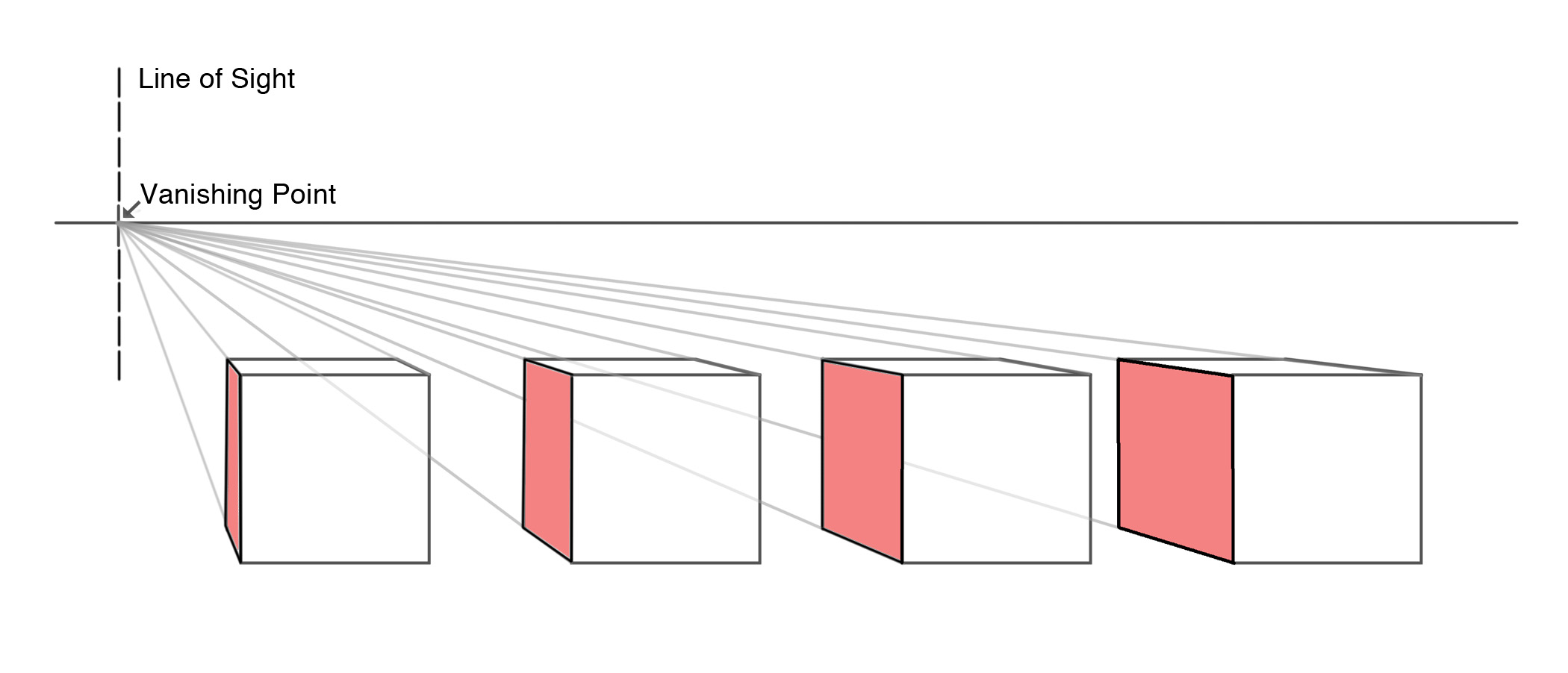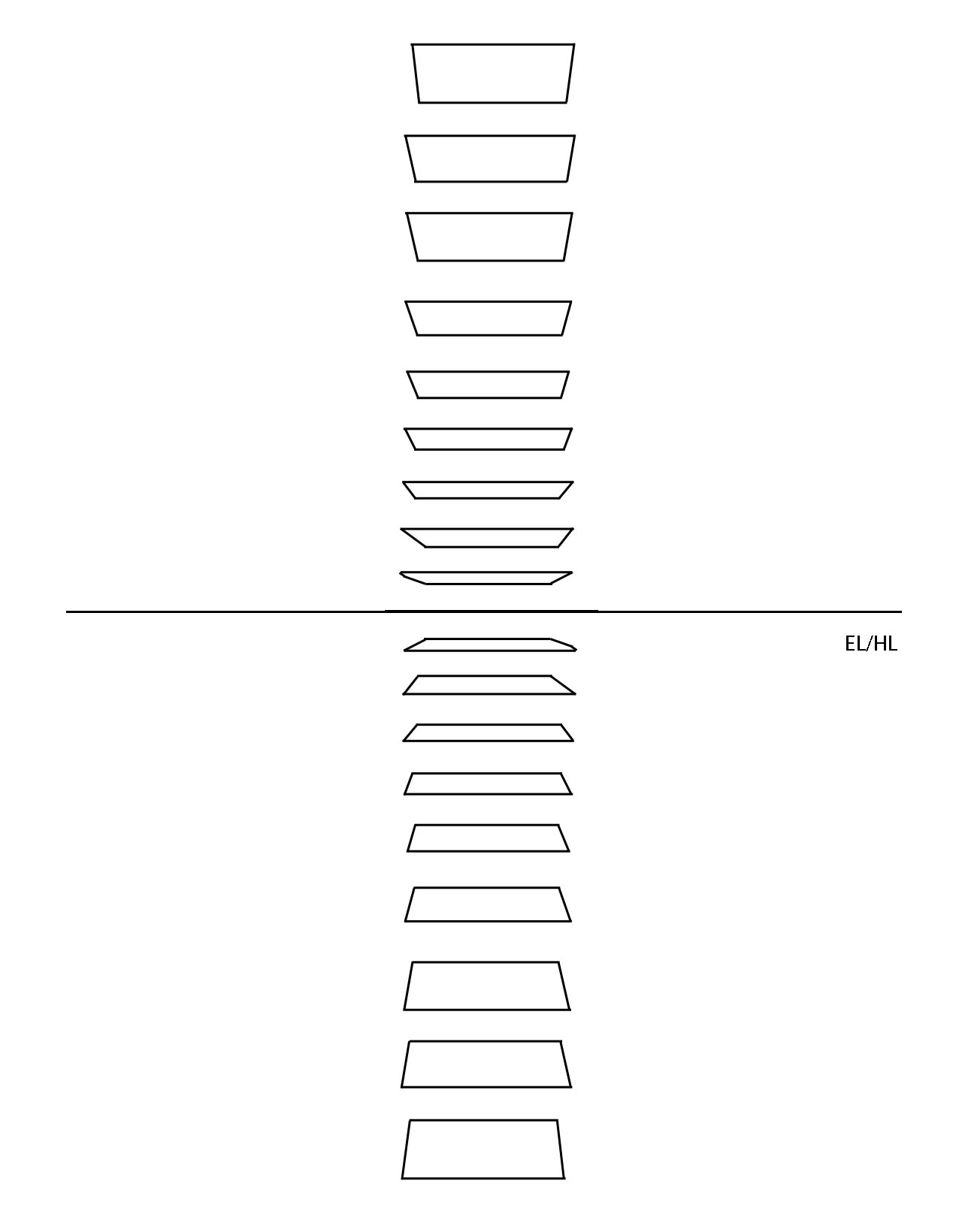Basic Perspective: Pitch
Pitch is the degree, or amount, that a plane is foreshortened. The greater the pitch, the narrower the visible area of that plane.
Eye level affects the amount of pitch (visual area) of a plane. In 1 point perspective, the planes on objects closest to the eye level have greater pitch, are more foreshortened (narrower), than the planes farther away. The degree of the pitch of planes is determined by the distance above and below the eye level.
For example imagine you are standing in front of your table. Your eye level enables you to see almost all of the tabletop’s surface. Now imagine you are sitting on a chair and still looking at the tabletop, but now the tabletop’s surface looks narrower as though there were less tabletop surface than before. The same illusion of surface will occur to a plane that is moved left or right of the viewer’s line of sight. This illusion is called Pitch.
Note: Planes are foreshortened squares or rectangles, but can also be the flat side of any shape like triangles, octagons, ovals, etc.
The distance to the left or right of the Line of Sight also affects the amount of pitch on a plane. In perspective, the planes of objects closest to the line of sight have greater pitch (are narrower/more foreshortened) than the planes farther away. As with eye level, the degree of the pitch of each plane is determined by the distance to the left or right of the line of sight.
Note: In 2 point perspective, the plane farther away from the viewer (non-visible) always has less (or wider) pitch than the visible plane, regardless of the line of sight.

Pitch: The visual area changes as the pitch changes.
Please note: The most common mistake made when dealing with planes and pitch occurs when students confuse pitch with diminution.
Because we are used to objects becoming smaller in the distance (diminution), we might logically assume that the pitch of the plane will also be greater (flatter and narrower) as it recedes away above or below Eye Level, or as the object moves left or right of the line of sight. However, that is the opposite of what actually happens.
When a plane moves away from the eye level or line of sight the pitch of the plane becomes less foreshortened. Therefore the plane is consequently visually wider, taller, more square, more round, or more circular than the planes that are closer to the eye level or line of sight.
Do the following experiment to understand the application of this principle:
Hold a book up vertically and touch it to your nose, just as we did your hand earlier (line of sight). Extend your arm out and slowly move the book to the left or right. Notice how the amount of visible surface of the book increases the farther away from your nose it moves. In other words, the further away from the Line of Sight the book moves, the less pitch (less foreshortened) there is.
Now hold the book horizontally in front of your eyes (eye level). Extend your arm out again and slowly move the book up and down. Notice that as you move the book above or below your eye level the amount of visible surface (pitch) also increases. In other words, the further away from the Eye Level the book moves, the less pitch (less foreshortened) there is.
Note: Foreshortening of the planes of an object also occurs visually when it rotates or turns from the viewer.
 In this example, notice how the vertical planes on the cube have less pitch the farther away they move from the line of sight.
In this example, notice how the vertical planes on the cube have less pitch the farther away they move from the line of sight.
